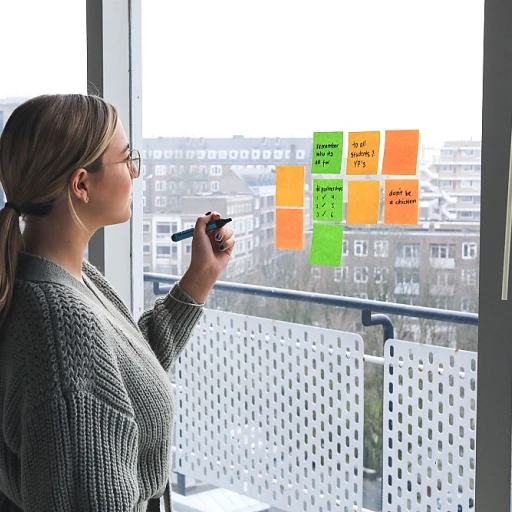Understanding the Importance of Learning Pathways
The Value of Structured Learning for Employees
In the hustle and bustle of work life, it can be easy to overlook the importance of structured learning paths for employees. Yet, these pathways play a crucial role in employee development, offering a clear direction for skill development and personal growth. Employees are not just workers; they're learners on a journey to enhance their skills and contribute meaningfully to their organization.
Why Learning Pathways Matter
Learning pathways are more than just a series of training programs. They're a roadmap that guides employees through a well-thought-out learning journey, ensuring they gain the necessary skills to thrive in their roles. By focusing on crafting personalized paths, organizations can align learning objectives with both employee goals and business needs.
Benefits for the Organization and the Individual
For the organization, structured learning pathways can lead to increased employee engagement and satisfaction. When employees see a clear path for their development, they're more likely to stay committed to their roles and the company. This commitment translates into reduced turnover rates and a more skilled workforce.
On an individual level, employees benefit from a sense of direction and purpose. They know what skills they need to develop and can track their progress over time. This not only boosts their confidence but also enhances their overall learning experience.
Creating a Culture of Continuous Learning
Establishing effective learning pathways is about fostering a culture of continuous learning within the organization. This involves recognizing the diverse needs of employees and providing them with the resources and support they need to succeed. By doing so, organizations empower their employees to take charge of their learning journey, ultimately benefiting both the individual and the company.
Understanding the value of structured learning pathways is the first step in creating an environment where employees can thrive. As we explore further, we'll delve into how to identify employee needs and goals, and the role of technology in enhancing these pathways.
Identifying Employee Needs and Goals
Pinpointing What Employees Really Need
Understanding what drives an employee isn't one-size-fits-all. Each person in your team has unique aspirations and skill gaps. This means getting a good handle on individual employee needs is crucial. Hearing what employees want directly from them through surveys or candid conversations helps tailor a learning path that truly hits the mark. Reaching out to employees and collaborating on learning goals enables the design of personalized learning pathways that resonate with each individual. Something as quick and simple as regular feedback sessions creates a space for employees to express their learning preferences.Aligning Objectives with Personal Growth
A personalized learning plan should align with both organizational and personal development goals. When the goals of employees meet the organization's mission, it creates a win-win scenario. Employee engagement is heightened, and the organization benefits from a motivated workforce. Identifying common goals aligns efforts and resources more effectively. For example, if an employee shows interest in leadership skills or tech know-how, offering specific training programs allows them to feel valued and driven. Connecting these success stories of personalized learning objectives with your broader goals sets a robust foundation for your learning management.Catering to the Right Skills
Skill development is best achieved when the right training programs are paired with individual needs. Recognizing which skills need refinement can open doors for employees to tap into untapped potential. Once you've charted these waters, designing a pathway that incorporates skill-specific content is the next step. Numerous online training courses provide practical ways for employees to sharpen their skills, such as solving real-world challenges. Creating a path that tailors learning content and aligns with individual employee journey sets the tone for successful learning. Want more insights on empowering a self-guided learning experience? Check out the detailed guide on self-guided education and discover how you can boost employee growth.Designing Customized Learning Plans
Crafting Unique Learning Paths for Every Employee
Let's talk about giving each employee a learning experience that fits them like a glove. Think of it like building a playlist that matches each employee's taste. Your growing organization is a blend of varied talents and aspirations, and understanding how to tap into these requires a personal touch. First off, getting to know each learner, including who they are and what skills they want or need, can lay a solid foundation. Do they want to expand current skills, or are they looking to pivot to something new? Setting personalized goals makes a big difference for motivating them to engage actively with the training offered. Conversations, surveys, or even informal chats during coffee breaks can reveal a lot about their aims. Once you have the key insights, it’s time to design a plan. Personalized learning journeys shouldn't be cookie-cutter; they should adapt to what drives each person. Different paths might include:- Traditional courses for those who love a classroom setup, virtual or otherwise.
- Short skill-building videos or tutorials for quick learners.
- On-the-job training and mentorship for hands-on folks.
- Interactive content like webinars, group workshops, or simulations for those who prefer engaging and feedback-rich environments.
Integrating Technology in Learning Pathways
Blending Tech with Learning
Technology has become the secret sauce in the recipe for effective learning pathways. With its help, organizations can serve up personalized learning experiences that cater to each employee's unique needs and goals. From online courses to virtual reality simulations, the options are as varied as the skills employees need to develop.
Tools of the Trade
Let's talk tools. Learning management systems (LMS) are the backbone of many training programs. They help track progress, manage content, and deliver courses seamlessly. But it's not just about having an LMS. It's about choosing one that aligns with your organization's learning objectives and employee development goals.
- Online Courses: Platforms like Coursera and Udemy offer a treasure trove of courses that can fill skill gaps.
- Virtual Reality: VR can provide immersive training experiences, especially useful in fields like healthcare and engineering.
- Mobile Learning: Apps allow employees to learn on the go, making learning paths more flexible and accessible.
Creating a Connected Experience
It's not just about the tools; it's about creating a connected learning experience. Integrating technology into learning pathways means ensuring that all parts of the learning journey are linked. This might involve using data analytics to personalize learning content or leveraging AI to recommend courses based on an individual's progress and goals.
Real-Life Success Stories
Take the example of a tech company that integrated AI-driven analytics into their employee training programs. By analyzing learning data, they were able to tailor learning paths to individual employees, significantly boosting engagement and skill development. Employees felt more empowered and engaged, leading to a more productive workforce.
Incorporating technology into learning pathways isn't just a trend; it's a necessity. By doing so, organizations can ensure that learning is not only effective but also engaging and personalized, driving both employee satisfaction and organizational success.
Measuring the Impact of Learning Pathways
Evaluating Success: A Real Eye-Opener
When it comes to measuring the impact of learning pathways, it's not just about ticking boxes. It's about seeing real change and growth in employees. Organizations need to focus on both quantitative and qualitative measures to get the full picture. Think of it like this: numbers can tell you how many employees completed a course, but stories and feedback reveal how those courses changed their work life.
Setting Clear Learning Objectives
Start with clear learning objectives that align with the organization's goals. This makes it easier to track progress and see if the learning paths are hitting the mark. Are employees gaining the skills they need? Are they more engaged? These questions help shape the evaluation process.
Using Data to Drive Decisions
Data is your best friend here. Use it to track employee progress and see where they might be struggling. Learning management systems (LMS) can provide insights into course completion rates, assessment scores, and even time spent on training programs. This data helps identify skill gaps and areas where employees might need more support.
Feedback: The Secret Ingredient
Don't underestimate the power of feedback. Gathering input from employees about their learning experiences can provide valuable insights. Are the learning pathways engaging? Do they feel supported in their development? Feedback helps refine the process and ensures the learning journey is effective and meaningful.
Celebrating Success and Adjusting Paths
Recognize and celebrate employee achievements. This boosts morale and encourages continued participation in training programs. But remember, it's also important to adjust learning paths based on the feedback and data collected. This ensures that the pathways remain relevant and effective for individual growth and organizational success.
In the end, measuring the impact of learning pathways is about more than just numbers. It's about creating a supportive environment where employees feel valued and empowered to grow. For more insights on crafting effective learning pathways, check out this article.







